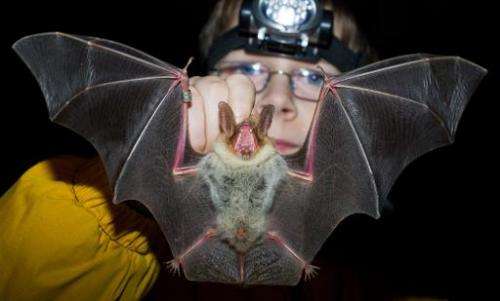Bats bounce back in Europe

Europe's bat population recovered by more than 40 percent between 1993 and 2011 after decades of decline, according to a survey published by the European Environment Agency (EEA) on Thursday.
In their most comprehensive study yet, surveyors fanned out across nine countries to count numbers at 6,000 sites used for hibernation by 16 of Europe's 45 bat species.
The bat population increased by 43 percent overall from 1993 to 2011, "with a relatively stable trend since 2003," the Copenhagen-based agency said.
Two species, the whiskered bat (Myotis mystacinus) and Brandt's bat (M. brandtii), showed strong growth, and eight species had moderate gains.
Three species were stable and the picture for two species was unclear. There was a decline in only one species, the grey long-haired bat (Plecotus austriacus).
Bat populations in Europe plummeted in the latter half of the 20th century, their habitat wrecked by intensive agriculture, deliberate destruction of their roosts or use of toxic chemicals to treat timbers in old buildings.
Many of the species with rising populations remain rare and vulnerable, with climate change an emerging threat, the EEA said.
"It is extremely encouraging to see bat populations increasing after massive historic declines," the agency's executive director, Hans Bruyninckx, said.
"It suggests that targeted conservation policies over the last years have been successful. But many bat species are still endangered, so preserving their habitats is still an important priority."
The survey encompassed Austria, Britain, Hungary, Latvia, the Netherlands, Portugal, Slovakia, Slovenia and the German states of Bavaria and Thuringia.
Feared by some, bats play an essential role in the eco-system, say experts.
Insect-eating bats devour huge quantities of mosquitoes and crop-damaging pests; nectar-feeding bats are vital pollinators in tropical forests and deserts; and fruit-eating bats help disperse seeds through their faeces.
© 2014 AFP


















